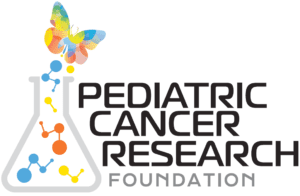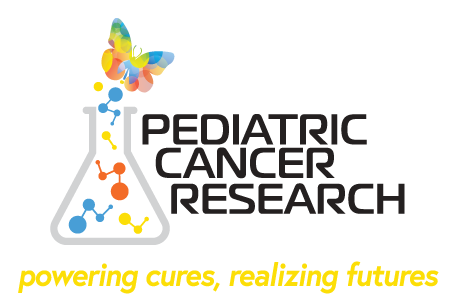By Bill Thomas | March 1, 2024
If you’re reading this, then you share something in common with everyone here at the Pediatric Cancer Research Foundation (PCRF). That is, we are all united in our goal of helping children beat cancers so they can go on to live long and happy lives.

Over the years, PCRF has provided funding to dozens of pioneering researchers across the country. The work we’ve supported has contributed to numerous breakthroughs, increasing survival rates and providing better treatment options, sometimes where there were none at all.
Even with the advancements that have already been made, we know even more progress is possible when we work together. Since the Foundation’s creation, we have worked to connect people from all walks of life–including research scientists, students, administrators, social workers, cancer survivors, family members, and donors–who share our dream.
To highlight just how important collaboration is, we asked several PCRF-funded researchers to share their own experiences working with colleagues. Some of them work together in the same lab. Others are separated by geography, collaborating across interstate or even international borders. All of them, however, coalesce around the desire to advance innovation and transform pediatric cancer care.
Validating Research Through International Cooperation
Not long ago, we told you about a clinical trial being run by Dr. Elliot Stieglitz at UCSF Benioff Children’s Hospital. Dr. Stieglitz has been researching juvenile myelomonocytic leukemia (JMML), an aggressive form of blood cancer whose only known curative treatment is a stem cell transplant that puts patients at risk for many short- and long-term side effects.
Unfortunately, the treatment doesn’t always work. That makes it even more important for physicians to be able to accurately identify which patients are most likely to benefit from such treatment and which ones aren’t. To facilitate this, Dr. Stieglitz has spent the last few years developing a DNA methylation test, thanks in part to funding from us.
Dr. Stieglitz is currently overseeing a clinical trial. However, this might have never been possible without the valuable contributions of other researchers working overseas.

“Regarding DNA methylation, there were three groups that all published very similar data at the same time, one in Germany, one in Japan and our group in the United States. We collaborated and pooled all of the patient samples from each of the individual groups across three continents,” Dr. Stieglitz said.
“JMML is a very rare disease, but together we were able to look at 300 patients and establish international consensus definitions for low, intermediate and high DNA methylation. These are the same consensus definitions that we’re using in our recently opened clinical trial. Using DNA methylation testing on the trial, certain patients will have the option to forgo a stem cell transplant for the first time. Without international collaboration, we wouldn’t have been able to do this.”
Expanding Patient Access and Utilizing Resources
Collaboration isn’t exactly a new concept for Dr. Ashley Plant-Fox and Dr. Josephine HaDuong. They’ve known each other since 2017, when the pair began working at the Children’s Hospital of Orange County (CHOC) in California. Even before that, Dr. Plant-Fox had been refining ideas for a trial to test a groundbreaking new vaccine-based immunotherapy treatment for diffuse intrinsic pontine glioma (DIPG), a devastating form of pediatric brain cancer.
Significant portions of the protocol for Dr. Plant-Fox’s trial were written during her time at CHOC. However, the trial itself – which was financed in part by PCRF’s Will Irwin Memorial Fund – didn’t begin enrolling patients until 2022. By that time, Dr. Plant-Fox had relocated to the Ann & Robert H. Lurie Children’s Hospital of Chicago, while Dr. HaDuong remained at CHOC.
“DIPG is a devastating disease with <1% 5-year overall survival. The families of children with this diagnosis are in a very difficult situation from the start and we want to make access to innovative new therapies as easy as possible. Collaborating to make the trials available at multiple sites across the country can ease the burden of the decision to enroll in a clinical trial. Keeping families together during this tough time is essential,” Dr Plant-Fox said.
“In addition, multiple CHOC families were actually involved in funding the DIPG vaccine trial so having CHOC as a site for the trial was an easy decision.”
To that end, Dr. Plant-Fox is leading the trial at Lurie Children’s Hospital, while Dr. HaDuong oversees the trial at the Hyundai Cancer Institute at CHOC. In addition, Dana Farber Cancer Institute in Boston and Alberta Children’s Hospital in Canada are also participating. Thus, the trial can enroll more patients and take advantage of a much wider range of resources.
“With clinical trials, especially early phase clinical trials, you want to learn as much information as possible from every single patient,” Dr. Plant-Fox explained. “With this trial, we have four different labs working on the blood and tissue samples of patients. We’re using everyone’s expertise to learn as much as possible. That way, if the vaccine doesn’t work or only works for certain patients, we have as much information as possible to learn from and potentially innovate a new vaccine.”
Exploring New Ideas and Learning from Others
Sometimes, collaboration isn’t planned and intentional. Sometimes, it’s just a matter of being willing to listen. No one knows that quite like Dr. Alex Huang, a professor of pediatrics at Case Western Reserve University School of Medicine and program director at the Angie Fowler Adolescent & Young Adult Cancer Institute at University Hospitals Rainbow Babies & Children’s Hospital in Cleveland, whose work Pediatric Cancer Research Foundation has funded in the past.
While working to develop new therapeutic options for pediatric sarcomas, Dr. Huang was approached by a colleague who needed help explaining why certain patients responded more positively to cryoablation treatment than others. However, when Dr. Huang tested cryoablation on lab animals, the results were perplexing.
The animals responded well to the procedure, in a manner that suggested the presence of STING – a DNA-detecting signaling molecule – in their immune systems. The problem? The animals in question didn’t have any STING in their immune systems.
The solution to this conundrum came from an unexpected source.

“One day, my graduate student from Saudi Arabia was sharing some data with me, and he said ‘Dr. Huang, we never looked at the tumor cells that we injected into these animals. Maybe the tumor cells themselves contain STING,’” Dr. Huang recalled.
“I said ‘Who cares about STING in tumor cells? We have to look at the immune system,’ but he said ‘No, we have to look at this.’ So, he spent the next two years doing that and, in the end, he showed that the STING signaling contribution doesn’t come from the immune cells like we always thought. It’s actually the tumor cells themselves causing the STING signaling.”
Recently, Dr. Huang and his graduate student published a paper on their findings. Further investigation could have major implications for the future of pediatric cancer research. Most notably, these findings may help researchers working to rationally deploy STING agonists to bolster the body’s natural immune response against cancer cells.
“That moment came when I was meeting my student and I was supposed to be teaching him. Instead, he was teaching me. I completely dismissed the student’s idea at first, but he was politely insistent. He said, ‘Just because nobody else has looked for it doesn’t mean it doesn’t exist,’ and that led to this whole new discovery that we’re now trying to capitalize on,” Dr. Huang said.
“There’s so much we can learn from each other. That’s why collaboration and communication matter.”




